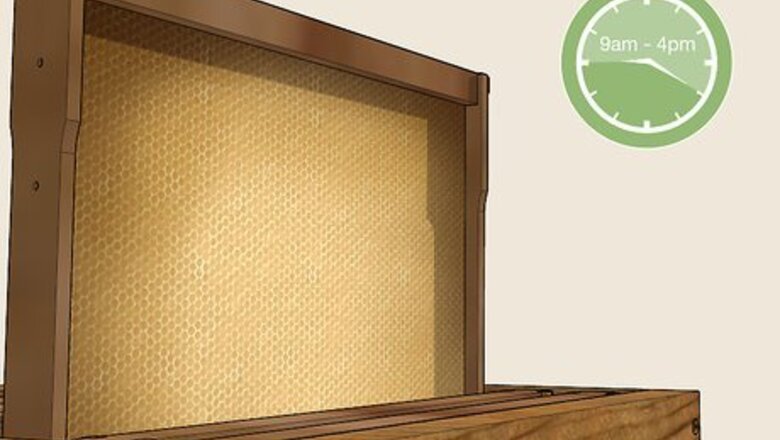
views
Harvesting the Wax Caps

Get the wax caps between 9:00 am and 4:00 pm when the bees are gone. It is best to harvest your beeswax when there are as little bees around the hive as possible. Typically, bees leave in the morning to search for pollen and return to the hive at the end of the day. This way, you are less likely to get stung! Having fewer bees around makes it easier to access the frames and get the wax caps, as well. Bees can get in your way and make the process more difficult.

Wear a full beekeeper’s outfit to keep you safe from any bee stings. While you may not be completely sting-free, this helps keep you covered and minimize bee stings. Be sure your face is completely covered by the mesh and that the suit is secured in the back. If you don’t have a beekeeper’s outfit, wear as thick of clothing as you can. Cover your legs with long overalls or long pants, wear a long-sleeve shirt, put on a veiled hat, and remember elbow-length gloves. Keep the mesh away from your face. If the mesh touches your face, you can get stung. You can make your own beekeeper's suit for cheap using ripstop nylon and a pattern printed out from the internet.

Use a smoker to get rid of the bees and easily get to the hive. A smoker makes the bees move lower in the hive, away from the honeycomb. To use the smoker, light the inside newspaper with a match and pump the smoke through the hose. Then, pry the lid off of your hive using a hive tool, and blow the smoke at the entrance of the hive and into the opening. The smoke from the smoker gives the bees the impression that the hive is on fire, so they begin to feast on the honey as a way to preserve it. Eating a lot of honey makes the bees get drowsy, so they are less likely to bother you as you get the wax caps out of the hive. A hive tool resembles a crowbar.

Take out the flat frames full of wax caps and remove any attached bees. Once you open the lid of the hive and smoke out the bees, you can easily lift up the flat frames. If you need assistance, use your hive tool to lift up the top of the frame. Hold the frame with both hands, and inspect the frame for bees. If you see any bees, gently remove them using a bee brush. A bee brush is a small tool designed to remove bees from their honeycombs. If any bees are trapped in the honeycomb, pick them out by hand.
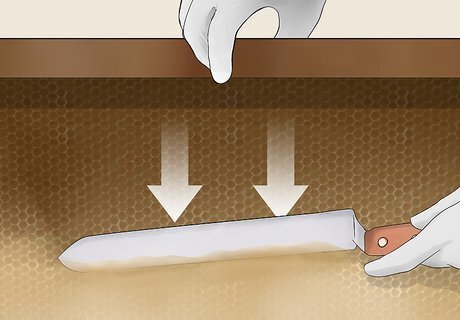
Scrape away the wax cappings using a hot uncapping knife. The honeycomb is attached to the frame with beeswax. To get the wax cappings, scrape an uncapping knife down the frame from top to bottom in one steady motion. The honeycomb should easily slide off the frame with moderate pressure. After you’ve removed the wax cappings from the frame, place the fame back into its slot in the hive. To heat up your knife, place it in boiling water for 30-60 seconds. A capping knife is a long, straight knife used to harvest honey and beeswax. If you don’t have a capping knife, you can use a dull butter knife or a fork.
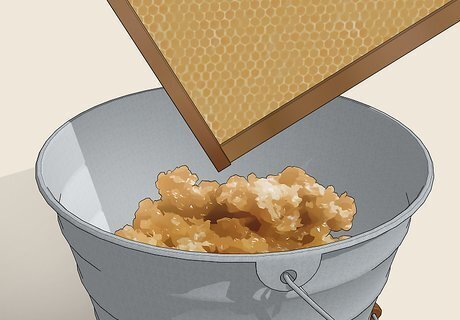
Place the caps in a bucket so the honey can sink to the bottom. As you scrape off the honeycomb and wax cappings, place them inside of a bucket. Let the bucket sit for 15-30 minutes so the honey can separate from the wax caps naturally. The wax caps rise to the top of the bucket, while the honey sinks to the bottom.
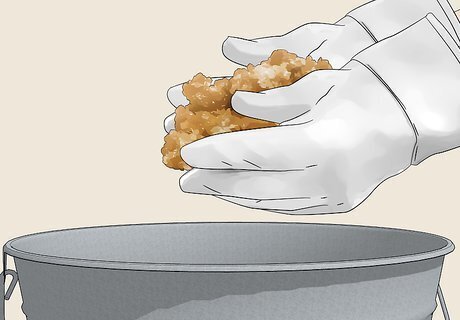
Render the wax caps as soon as you remove them from the hive. If you wait too long to render the wax caps, it will be difficult to pull them out of the honey. For best results, pick the wax caps out of the bucket as the honey drains to the bottom. Place the wax caps in a small bowl so you can render the beeswax. If you are preparing your beeswax outside, waiting awhile may encourage bees to come find you and the honey.
Rendering Your Beeswax
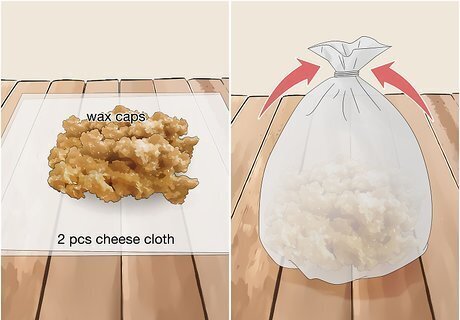
Wrap 2 pieces of cheesecloth around the wax caps. Spread out a piece of cheesecloth and put your wax caps in the middle. Wrap the honeycomb in the cloth, and place it inside another piece. Using multiple pieces of cheesecloth may cut down on any debris getting into your beeswax. Use a clip or a twist tie to secure the top of the cheesecloth. If you have small debris or insects in the honey, that’s okay. They will filter out as you render the wax.
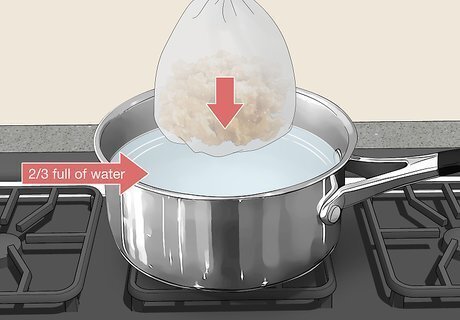
Fill up a large saucepan with water and place your cheesecloth inside. Your pot should be about two thirds of the way full of water so the cheesecloth bundle is completely submerged. Place the pot on the stove, and put your cheesecloth bundle into the water.
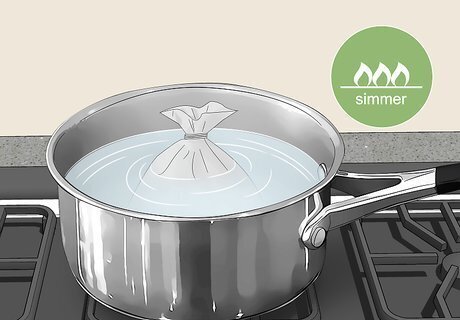
Heat up the water using a medium stovetop setting. Once your cheesecloth is submerged, start to heat up the water. As the water heats up, the beeswax melts away from the wax caps. The debris will stay contained as you melt the wax.
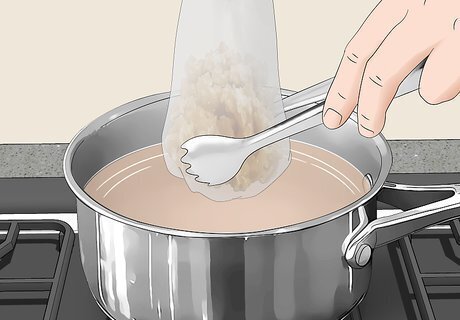
Squeeze the bundle with a set of tongs to extract more beeswax. The cheesecloth bundle shrinks in size as the wax seeps out of the cloth. When most of the wax melts away, lift up on the cloth with your non-dominant hand and apply pressure to the honeycomb using your tongs. This squeezes out the last of the wax, so you don’t waste any.
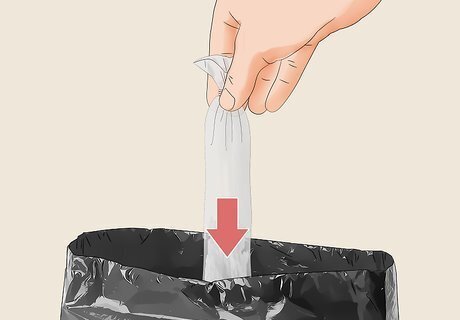
Throw out the cheesecloth when all of the beeswax is melted. After you’ve scraped out as much wax as you can, you no longer need the cheesecloth bundle. Simply throw this away in your garbage.
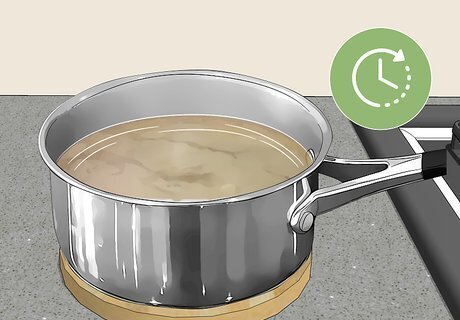
Let the pot and its contents cool until the beeswax is completely solid. Remove the pot from the hot burner so it can cool. As the beeswax cools, it forms a solid layer on top of the water. The cooling process can take around 1-4 hours on average. You can set a timer and come back to check on the beeswax, or simply let it sit for awhile and check on it periodically. If you’d like, you can leave your pot out to cool overnight and tend to your beeswax in the morning.

Pour out the remaining water after the wax is completely solid. Hold your pot over the sink, and tilt it slightly to pour out the water. Place your hand over the top of the pot so your beeswax doesn’t fall out. When you finish pouring the water, take your beeswax disc out of the pot. You can store it in a plastic bag or plastic container. There may be small specs of debris remaining in your beeswax. If this is the case, that’s okay! This shows it is authentic and pure. At this point, you can melt down your beeswax to use for things like making candles or chapstick.
















Comments
0 comment